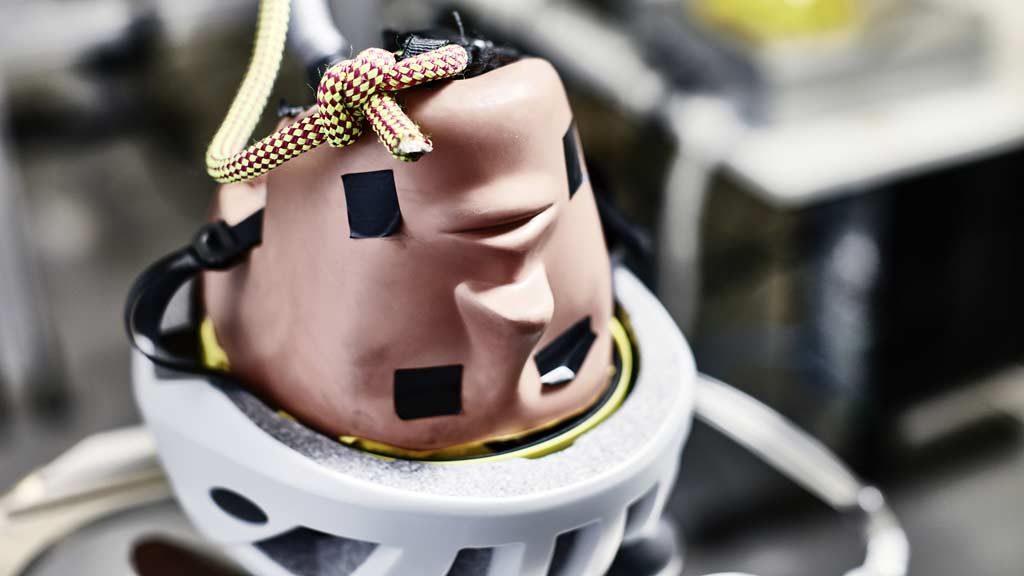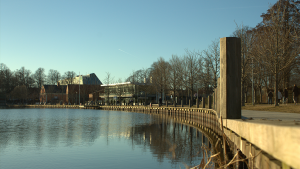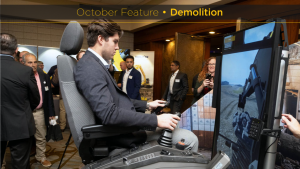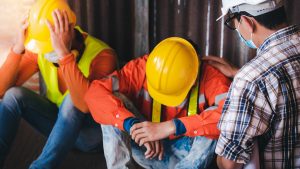A hundred years or so ago, hard hats were nothing more than steamed canvas, glue, a leather brim and black paint, the brainchild of Edward Bullard, who was inspired by steel helmets of the First World War.
Thanks to advances in technology, the hard hat has evolved over the decades. These days, the safety lids come in all shapes and sizes from plasticized domes to cowboy hats and just about every colour of the rainbow.
However, Karin Brolin, a professor at Chalmers University of Technology in Gothenburg, Sweden, is advocating for yet another evolution. She wants manufacturers to go back to the drawing board and come up with designs that provide better protection for head and brain injuries actually occurring on worksites.
Brolin, a leading expert on accidental injuries on worksites, maintains there is still much room for improvement when it comes to construction head protection.
“The first and most obvious thing is to make sure all workers are wearing hard hats,” she noted. “But we also need to make sure that the helmets that they’re wearing actually protect against brain injuries. If you look at hard hats, it seems to be that they’re developed to protect from objects impacting from above. But only a small portion of the incidents are because of objects being dropped from above.”
Brolin has studied the issue extensively and leads research on human body models with the aim of improving their biofidelity and usability. She has been looking at traumatic brain injuries and data for the Multi-directional Impact Protection System (MIPS), which was developed by leading brain surgeons and scientists and is aimed at reducing rotational forces to the head and injuries to the brain.
More than 14 million helmets around the world are now equipped with the MIPS technology, which uses a slip-plane system that literally moves inside the helmet upon impact, mimicking the brain’s own protection system. The system can reduce the harmful rotational motion transferred to the brain by an impact.
According to Brolin, tests on helmets these days are designed to gauge the effect of an impact from above, but the data shows most head and brain injuries on a construction worksite occur from falls.
In Canada, falls were responsible for causing 78 per cent of brain injuries among construction workers. In the U.S., falls caused 60 per cent of brain injuries, in Germany it was 58 per cent, and in Sweden it was 40.
“This seems to be the major issue when it comes to the more severe injuries,” said Brolin. “If we remove a lot of the falls from heights completely, a lot of the brain injuries will be gone.”
As for overall data on the prevalence of brain injuries amongst construction workers, the figures were disturbing.
Data shows that 26 out of every 100,000 construction workers in Canada suffer a brain injury. Sweden is lower at 12 and Germany was much higher at 124. The U.S. figures vary from 28 in 1988 to 212 in 2001.
Roofers and sheet and metal workers in particular are at a much higher risk of brain injury incidents and deaths. Figures for the U.S. showed that for roofers, 11 of every 100,000 workers die from a brain injury and for sheet and metal workers, the figure was even higher at 14 deaths for every 100,000 workers.
Brolin said it’s important to note an impact to a worker’s head can be linear from above or from an oblique angle when an object hits a helmet or a person falls to the ground, but when a worker’s head and helmet are subject to both linear and rotational forces, strains on a worker’s brain are much higher.
A layer of cerebrospinal fluid dampens the relative motion between the skull bone and brain in the event of an impact, explained Brolin, “so when something hits the skull bone and it starts moving there’s a little bit of a delay and energy-absorption by that cerebrospinal fluid before that movement goes into the brain.”
Impacts can cause a variety of brain injuries — from bleeding inside or outside the brain and concussions to shearing between the grey and white matter of the brain that sets off a cascade of chemical events.
As a result, said Brolin, it’s important that a hard hat protect a worker from falls as well as strikes from various angles. She wants to see manufacturers adopt the MIPS technology in helmets as an added layer of protection for workers as tests have determined that it could reduce strain from an impact by 39 per cent.











Recent Comments
comments for this post are closed